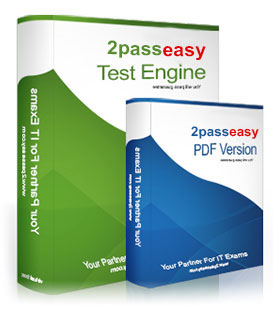300-101 Guide
Super ways to cisco 300 101 dump
Act now and download your Cisco ccnp routing and switching route 300 101 official cert guide test today! Do not waste time for the worthless Cisco ccnp dumps 300 101 tutorials. Download Updated Cisco Implementing Cisco IP Routing exam with real questions and answers and begin to learn Cisco ccnp 300 101 dumps with a classic professional.
Q41. Refer to the following access list.
access-list 100 permit ip any any log
After applying the access list on a Cisco router, the network engineer notices that the router CPU utilization has risen to 99 percent. What is the reason for this?
A. A packet that matches access-list with the "log" keyword is Cisco Express Forwarding switched.
B. A packet that matches access-list with the "log" keyword is fast switched.
C. A packet that matches access-list with the "log" keyword is process switched.
D. A large amount of IP traffic is being permitted on the router.
Answer: C
Explanation:
Logging-enabled access control lists (ACLs) provide insight into traffic as it traverses the
network or is dropped by network devices. Unfortunately, ACL logging can be CPU intensive and can
negatively affect other functions of the network device. There are two primary factors that contribute to the
CPU load increase from ACL logging: process switching of packets that match log-enabled access control
entries (ACEs) and the generation and transmission of log messages. Reference: http://www.cisco.com/
web/about/security/intelligence/acl-logging.html#4
Q42. A network engineer is investigating the cause of a service disruption on a network segment and executes the debug condition interface fastethernet f0/0 command. In which situation is the debugging output generated?
A. when packets on the interface are received and the interface is operational
B. when packets on the interface are received and logging buffered is enabled
C. when packets on the interface are received and forwarded to a configured syslog server
D. when packets on the interface are received and the interface is shut down
Answer: A
Explanation:
Q43. Refer to the exhibit.
Which statement is true?
A. Traffic from the 172.16.0.0/16 network will be blocked by the ACL.
B. The 10.0.0.0/8 network will not be advertised by Router B because the network statement for the 10.0.0.0/8 network is missing from Router B.
C. The 10.0.0.0/8 network will not be in the routing table on Router B.
D. Users on the 10.0.0.0/8 network can successfully ping users on the 192.168.5.0/24 network, but users on the 192.168.5.0/24 cannot successfully ping users on the 10.0.0.0/8 network.
E. Router B will not advertise the 10.0.0.0/8 network because it is blocked by the ACL.
Answer: E
Explanation:
Q44. PPPoE is composed of which two phases?
A. Active Authentication Phase and PPP Session Phase
B. Passive Discovery Phase and PPP Session Phase
C. Active Authorization Phase and PPP Session Phase
D. Active Discovery Phase and PPP Session Phase
Answer: D
Explanation:
PPPoE is composed of two main phases:
Active Discovery Phase--In this phase, the PPPoE client locates a PPPoE server, called an access
concentrator. During this phase, a Session ID is assigned and the PPPoE layer is established.
PPP Session Phase--In this phase, PPP options are negotiated and authentication is performed. Once the
link setup is completed, PPPoE functions as a Layer 2 encapsulation method, allowing data to be transferred over the PPP link within PPPoE headers.
Reference:
http://www.cisco.com/c/en/us/td/docs/security/asa/asa92/configuration/vpn/asa-vpn- cli/vpn-pppoe.html
Topic 3, Layer 3 Technologies
20. Refer to the exhibit.
Which one statement is true?
A. Traffic from the 172.16.0.0/16 network will be blocked by the ACL.
B. The 10.0.0.0/8 network will not be advertised by Router B because the network statement for the 10.0.0.0/8 network is missing from Router B.
C. The 10.0.0.0/8 network will not be in the routing table on Router B.
D. Users on the 10.0.0.0/8 network can successfully ping users on the 192.168.5.0/24 network, but users on the 192.168.5.0/24 cannot successfully ping users on the 10.0.0.0/8 network.
E. Router B will not advertise the 10.0.0.0/8 network because it is blocked by the ACL.
Answer: E
Explanation:
You can filter what individual routes are sent (out) or received (in) to any interface within your EIGRP
configuration.
One example is noted above. If you filter outbound, the next neighbor(s) will not know about anything
except the 172.16.0.0/16 route and therefore won't send it to anyone else downstream. If you filter inbound, YOU won't know about the route and therefore won't send it to anyone else downstream.
Q45. Which statement about the use of tunneling to migrate to IPv6 is true?
A. Tunneling is less secure than dual stack or translation.
B. Tunneling is more difficult to configure than dual stack or translation.
C. Tunneling does not enable users of the new protocol to communicate with users of the old protocol without dual-stack hosts.
D. Tunneling destinations are manually determined by the IPv4 address in the low-order 32 bits of IPv4-compatible IPv6 addresses.
Answer: C
Explanation:
Using the tunneling option, organizations build an overlay network that tunnels one protocol over the other
by encapsulating IPv6 packets within IPv4 packets and IPv4 packets within IPv6 packets. The advantage of this approach is that the new protocol can work without disturbing the old protocol, thus providing connectivity between users of the new protocol. Tunneling has two disadvantages, as discussed in RFC 6144: Users of the new architecture cannot use the services of the underlying infrastructure.
Tunneling does not enable users of the new protocol to communicate with users of the old protocol without
dual-stack hosts, which negates interoperability.
Reference: http://www.cisco.com/c/en/us/products/
collateral/ios-nx-os-software/enterprise-ipv6- solution/white_paper_c11-676278.html
Q46. Refer to the exhibit. The DHCP client is unable to receive a DHCP address from the DHCP server. Consider the following output:
hostname RouterB ! interface fastethernet 0/0
ip address 172.31.1.1 255.255.255.0 interface serial 0/0 ip address 10.1.1.1 255.255.255.252
! ip route 172.16.1.0 255.255.255.0 10.1.1.2
Which configuration is required on the Router B fastethernet 0/0 port in order to allow the DHCP client to successfully receive an IP address from the DHCP server?
A. RouterB(config-if)# ip helper-address 172.16.1.2
B. RouterB(config-if)# ip helper-address 172.16.1.1
C. RouterB(config-if)# ip helper-address 172.31.1.1
D. RouterB(config-if)# ip helper-address 255.255.255.255
Answer: A
Explanation:
Q47. Which three benefits does the Cisco Easy Virtual Network provide to an enterprise network? (Choose three.)
A. simplified Layer 3 network virtualization
B. improved shared services support
C. enhanced management, troubleshooting, and usability
D. reduced configuration and deployment time for dot1q trunking
E. increased network performance and throughput
F. decreased BGP neighbor configurations
Answer: A,B,C
Explanation:
Q48. Refer to the exhibit. Which statement about the configuration is true?
A. 20 packets are being sent every 30 seconds.
B. The monitor starts at 12:05:00 a.m.
C. Jitter is being tested with TCP packets to port 65051.
D. The packets that are being sent use DSCP EF.
Answer: A
Explanation:
Q49. Refer to the exhibit.
Which statement about the output of the show flow-sampler command is true?
A. The sampler matched 10 packets, each packet randomly chosen from every group of 100 packets.
B. The sampler matched 10 packets, one packet every 100 packets.
C. The sampler matched 10 packets, each one randomly chosen from every 100-second interval.
D. The sampler matched 10 packets, one packet every 100 seconds.
Answer: A
Explanation:
The sampling mode determines the algorithm that selects a subset of traffic for NetFlow
processing. In the random sampling mode that Random Sampled NetFlow uses, incoming packets are
randomly selected so that one out of each n sequential packets is selected on average for NetFlow
processing. For example, if you set the sampling rate to 1 out of 100 packets, then NetFlow might sample
the 5th, 120th, 199th, 302nd, and so on packets. This sample configuration provides NetFlow data on 1
percent of total traffic. The n value is a parameter from 1 to 65535 packets that you can configure. Table 2
show flow-sampler Field Descriptions Field Description Sampler Name of the flow sampler id Unique ID of
the flow sampler packets matched Number of packets matched for the flow sampler mode Flow sampling
mode sampling interval is Flow sampling interval (in packets) Reference: http://www.cisco.com/c/en/us/td/
docs/ios/12_0s/feature/guide/nfstatsa.html#wp1084291
Q50. Which PPP authentication method sends authentication information in cleartext?
A. MS CHAP
B. CDPCP
C. CHAP
D. PAP
Answer: D
Explanation:
 To know more about the 300-101, click here.
To know more about the 300-101, click here.


